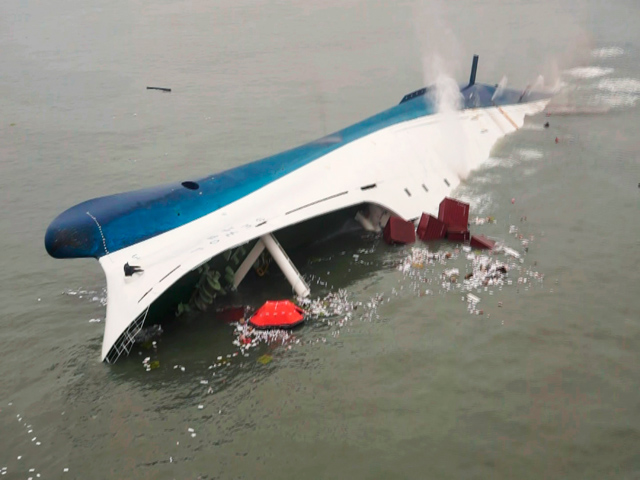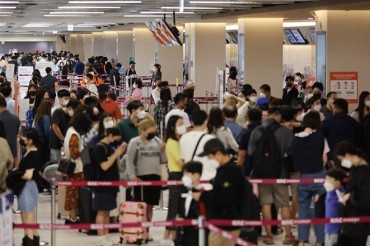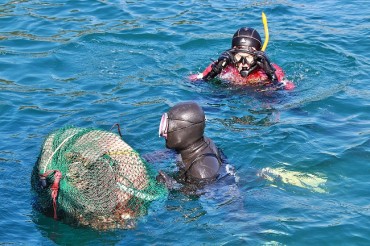
On April 16, 2014, the 6,825-ton ferry Sewol sank off the South Korea’s southwest coast. (image: wikipedia)
SEOUL, Apr. 7 (Korea Bizwire) — In the year following the deadly ferry sinking that claimed more than 300 lives, South Korea has striven to fix the social ills behind man-made disasters without any tangible results.
Few people can testify to any actual improvement in disaster prevention or control as a series of safety-related accidents followed the sinking, including the collapse of a ventilation grate in October that led to the deaths of 16 people standing on it.
On April 16, 2014, the 6,825-ton ferry Sewol sank off the country’s southwest coast, leaving 295 people dead and nine others unaccounted for.
Most of the victims were high school students on a field trip to the southern resort island of Jeju.
Critics accused the government of bungling its initial response to the disaster, arguing that more lives could have been saved had the government properly coordinated rescue operations in the early hours of the sinking.
Amid growing public anger and grief, the government scrambled to draw up measures aimed at preventing a similar tragedy. Those measures included the dissolution of the Coast Guard and the establishment of a new government ministry tasked with overseeing disaster control.
Critics have questioned the effectiveness of such measures.
Some experts claim, however, that part of the problem lies in an excessive reliance on the government. The public has a responsibility to actively participate in the construction of a safer society, they say.
“It’s too bad the government is trying to do everything,” Lee Jae-eun, a public administration professor at Chungbuk National University, said. “We should build ‘safety governance’ under which local governments, civic groups and businesses independently find and resolve safety issues.”
Others stress a more hands-on approach to disaster prevention.
“Until now, there’s been a tendency to neglect the field and solve issues through administrative means,” said Oh Won-shin, an expert at a school for firefighting safety in Incheon, west of Seoul. “In a culture that neglects the importance of the field and counts people’s precious lives only in terms of numbers, one or two more deaths in the field are seen by the staff in charge of safety as largely irrelevant to their work.”
Park Beom-soon, a professor at the Korea Advanced Institute of Science and Technology, called for sincere reflection on the disaster.
“The accidents and disasters of the past were a result of our ‘compressed growth,’” he said, referring to South Korea’s rapid industrialization that has often been blamed for shoddy infrastructure. “As our society continued to be growth-driven, there was no proper introspection or self-reflection, leading to repeated tragedies.”
(Yonhap)






